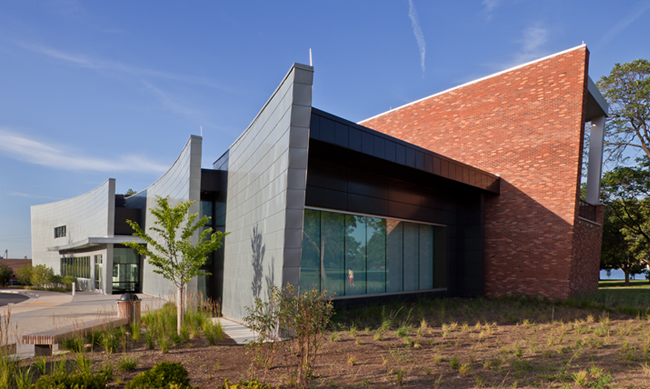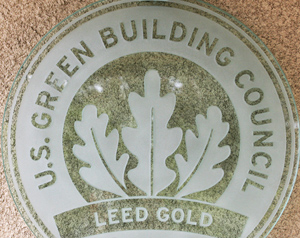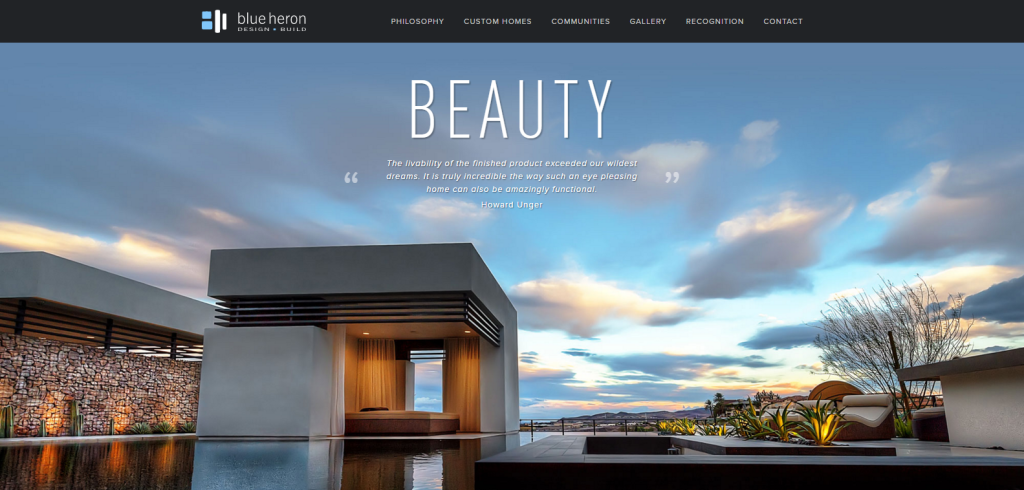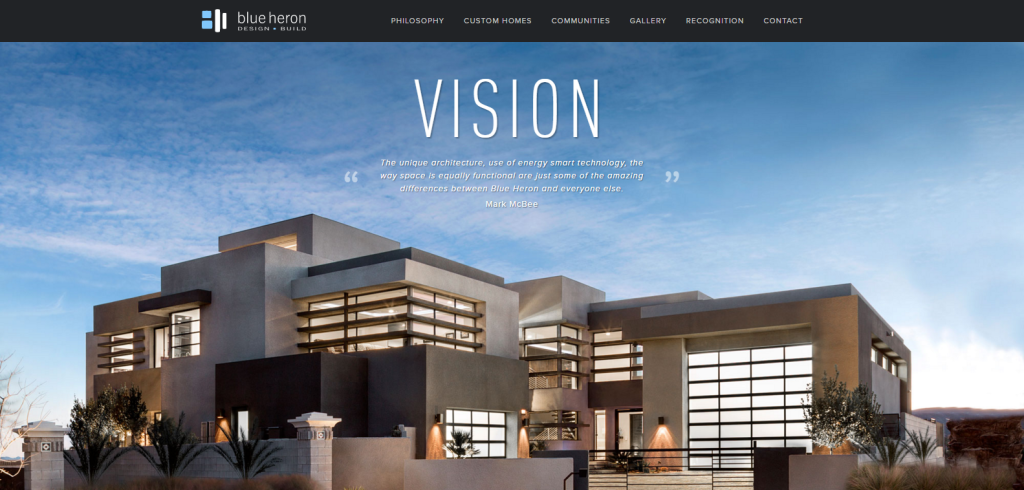Ft. McHenry LEED certified? Well, its Visitor Center Is. Also: a stunning desert home rated green by a different program

On a beautiful day back in September my wife and I went to Ft. McHenry. I’ve seen a lot of America, including many, many historic sites. But not Ft. McHenry. Now, living in Baltimore City for well more than a year, it was time–even though we didn’t have a typical motivation such as how to entertain out-of-town friends/family in our town.
 What a modest, but beautiful $9M building the Visitor Center is. At about 17K sq. ft., it was designed by architects GWWO, Inc., of Baltimore City. As stated in its press release about the project back in 2007: “Keeping the new building out of the cultural landscape—outside of the original 1814 reservation boundary—was a critical project goal.” It’s LEED® Gold certified. Among apparent LEED credits are both Daylighting credits. Regional Materials, sourced from within a 500 mi. radius,
What a modest, but beautiful $9M building the Visitor Center is. At about 17K sq. ft., it was designed by architects GWWO, Inc., of Baltimore City. As stated in its press release about the project back in 2007: “Keeping the new building out of the cultural landscape—outside of the original 1814 reservation boundary—was a critical project goal.” It’s LEED® Gold certified. Among apparent LEED credits are both Daylighting credits. Regional Materials, sourced from within a 500 mi. radius,  would probably be another. Open Space a gimme. It’s also got a geothermal heat pump system for excellent energy savings.
would probably be another. Open Space a gimme. It’s also got a geothermal heat pump system for excellent energy savings.
If visiting the historic fort, a pre-visit here is recommended.
In a more global sense, the U.S. Green Building Council published a report on the web earlier this year called “The Business Case for Green Building.”
The report states: “The top two reasons for building green: client demand (35%) and market demand (33%). The global green buildng market grew in 2013 to $260 billion, including an estimated 20% of all new U.S. commercial real estate construction.”
Also: “In a recent Nielsen global survey on corporate social responsibility, more than half (55%) said they are willing to pay extra for products and services produced or offered from companies that are committed to positive social and environmental impact–an increase from 50 percent in 2012 and 45 percent in 2011.” (Those corporate chiefs paying extra must have one or more daughters, if you saw the recent Forbes story?)
Bottom line you ask? “Owners of green buildings reported that their ROI improved by 10.2% on average for existing building green projects and 9.9% on average for new projects.” And, “Annual utilities cost per employee in green facilities was $675.26 lower than in non-green facilities.”
Linked here is the piece referenced and quoted.
From the USGBC’s Sep/Oct issue is the report that powerhouse mortgage buyer Fannie Mae is offering lower rates for green multi-family buildings which have obtained certifications including LEED, ENERGY STAR®, Enterprise Green Communities’ Green Criteria and 5 others. I’d call it green impact.

Living in the Desert
“Hey honey, I’ve found my dream home for us. You’ll like it too. There’s a look of blocky horizontality that’s sorta reminiscent of Frank Lloyd Wright’s Unity Temple.”
Trouble is, it’s located in Nevada (not much there there for us), it costs in excess of $2 mill and up-sizing by more than a factor of 2 (to 5,800 sq. ft.) at our stage might be the wrong move. Okay, the smallest model, at 3,457 sq. ft., starts at $629.9K.
Located about a 20-minute drive from Las Vegas, in tony Henderson, this New American Home 2015 is noted both for its green design and its “affordability.” Translated: you don’t have to be of the uber-wealthy class to afford it.
It and other models are offered by Blue Heron Design·Build. Its New American Home 2013 was LEED® Platinum certified.
As to the green features, imagine a small pool of water adding to the passive solar design by “allowing for air to be cooled as it passes over the water and into the surrounding rooms” according to a piece about it in The Washington Post back in September.
One interesting scheme: To disguise the fact that there are no windows on the west side of the house, 2-story windows are installed on the others. Allowing the afternoon sun to beat on heavily insulated walls rather than windows in a desert climate makes good sense. Roof-mounted solar panels provide enough renewable energy to satisfy homeowner needs, making the grid sound like a back-up plan. The builder claims a 7-year payback on the solar PV system. Given the climate–believable.
 Preventing thermal bridging through the structure is mentioned in the builder’s online video. It’s an important energy savings technique used in smart residential as well as commercial building construction.
Preventing thermal bridging through the structure is mentioned in the builder’s online video. It’s an important energy savings technique used in smart residential as well as commercial building construction.
Of course there are a number of homeowner amenities, many electronic in nature. For instance, pushing a button can cause glass pocket doors to open or close noiselessly across the entire back wall of the home, “letting you step instantly from the 2-story family room into the sun, the swimming pool, a hot tub or onto a shaded terrace.”
Yup–just dreamy.
Expected Certifications for the New American Home 2015-
- National Green Building Standard – Emerald
- US DOE Energy Star certified
- US DOE Builders Challenge qualified
- Build America Program
- US EPA Indoor airPLUS Qualified
- Southern Nevada Green Building Partnership
- Water Smart Home program (SNWA/SNHBA)
- Progress Energy Home Advantage Program